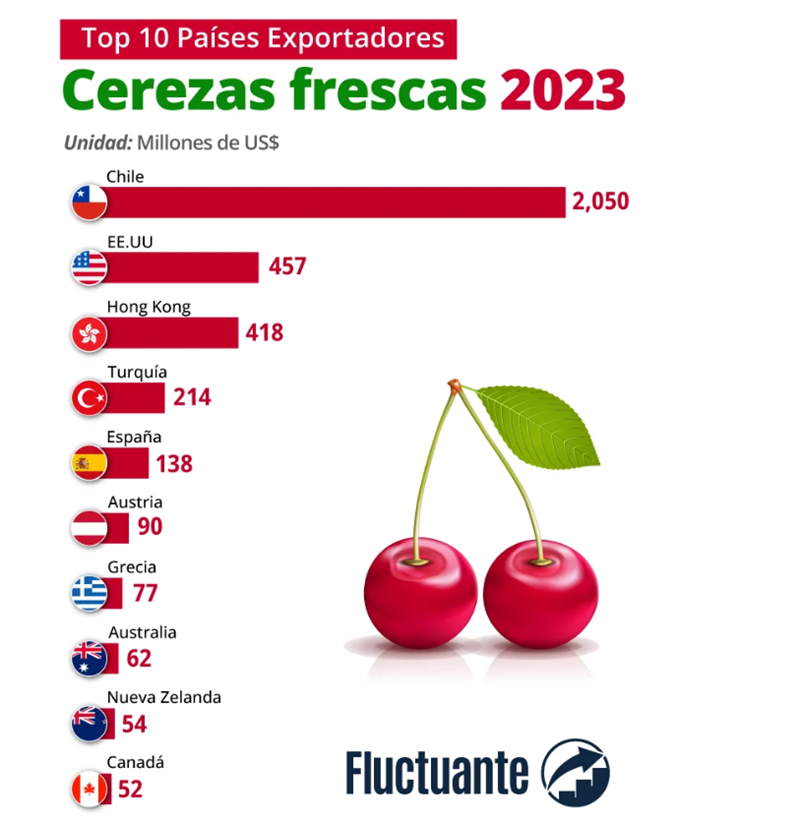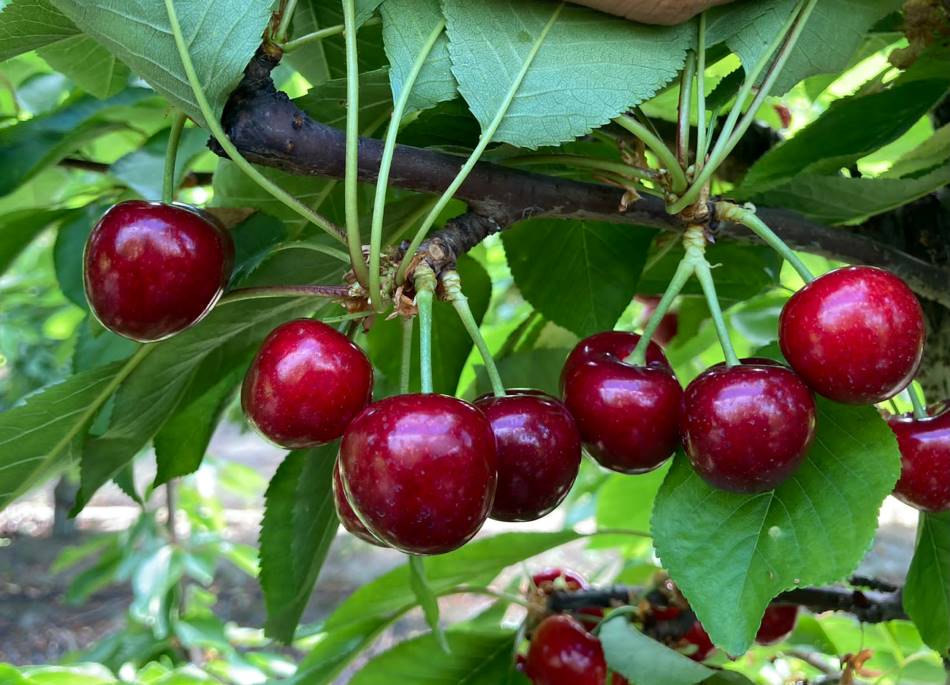The global cherry exports have shown a trend of sustained growth in recent years, rising from $3.089 billion in 2019 to a peak of $4.514 billion in 2022, mainly due to the strong demand from Asian markets like China. In 2023, however, these exports saw a 13.5% decline, reaching $3.903 billion.
Main Exporting Countries
Chile: World Leader in Cherry Exports
In 2023, Chile exported $2.050 billion, showing a slight decrease from the $2.128 billion exported in 2022. Despite this slight drop, Chile remains the world's top supplier, mainly catering to the Chinese market, where cherries are highly valued, especially during holidays like the Lunar New Year.
The export of Chilean cherries is concentrated between November and March, taking advantage of the off-season in the Northern Hemisphere. Chile accounts for over 50% of the world's cherry exports.
United States: A Stable Competitor in the Global Market
The United States' cherry exports in 2023 reached $457 million. Although the figures are significantly lower than Chile's, the United States remains an important player, exporting mainly to Canada, South Korea, and China. The harvest season runs from June to August.
Hong Kong, China: A Key Redistribution Market
Hong Kong continues to play an important role, re-exporting cherries to China. In 2023, its exports were $418 million, down from $1.288 billion in 2022.
Turkey
Turkey remains a key exporter in Europe, with exports reaching $214 million in 2023. Turkey has shown stability in recent years, with similar figures to the $134 million exported in 2022. Turkey continues to benefit from its proximity to European and Russian markets, as well as a harvest season that coincides with the high demand in the Northern Hemisphere summer. Cherry exports mainly take place from May to July.
Spain
Spanish cherry exports have seen significant growth, reaching $138 million in 2023, compared to $96 million in 2022. Spain has improved its position in the European market, consolidating its status as a reliable cherry exporter, particularly in markets like Germany, Italy, France, and the United Kingdom. The regions of Extremadura and Aragón are famous for their high-quality cherry varieties.
Other notable exporters included Austria, Greece, Australia, New Zealand, and Canada.
 Image 1: Top 10 Exporting Countries in 2023. Source: Fluctuante.
Image 1: Top 10 Exporting Countries in 2023. Source: Fluctuante.
Discover the complete graph here
Challenges and Opportunities in Cherry Exports
- Logistical Challenges: Due to the perishable nature of cherries, cherry exports require efficient and rapid logistics, with air transport being a common option to reach distant markets like Asia.
- Impact of Tariffs: Trade relations and tariff agreements play a crucial role in cherry exports. A clear example is the trade war between the United States and China, which impacted U.S. exporters and benefited Chile.
- Climate Change: Climate fluctuations can affect cherry production, directly impacting exports. Unexpected frosts or droughts can reduce harvests, limiting the supply available for international markets.
- Innovation in Production: Growers are investing in more resilient varieties that meet market demands, opening new opportunities to increase cherry exports.
Source: Portal Frutícola
Image: SL Fruit Service
Cherry Times - All Rights Reserved













